Ostrich eggs painting
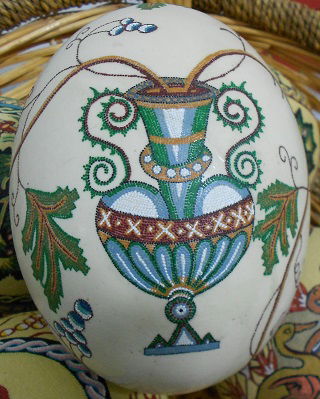
The ostrich egg painting is a very ancient art, not limited the Middle East. Ostrich eggs decoration has for example a long story in South Africa. The oldest decorated egg shells were discovered in a South African cave and date back to 60 000 years ago (image below). Decorated ostrich eggs are found in almost all the ancient cultures of Africa, of the Near, Middle and Far East.
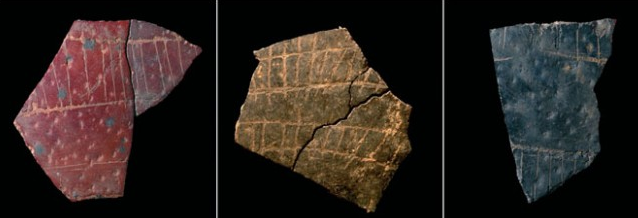
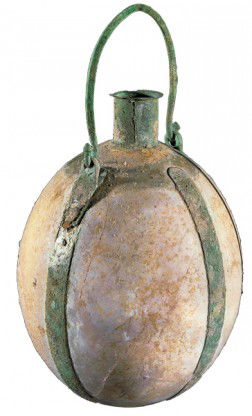 Eric Lessing, www.biblicalarchaeolog. ref. below | The ostrich egg shell is very strong and durable. The average size is 15 cm long and 13 cm wide. The shell thickness is about 2 millimetres. The net capacity is a little more than 1 litre. in Africa, ostrich eggs were commonly used as water flask, as hunter-gatherers of South African desert do even today. Such a use is also attested in the ancient Middle-East, as show this harnessed sample dated of the Middle Bronze Age II (1750 - 1650 BC) (left image). Ostrich eggs were also used as perfume containers, food containers, drinking cups, and bowls. In the Mycenaean and Minoan cultures, we find ostrich eggs turned into rhytons, a kind of precious drinking cup, as this Minoan example decorated with octopuses dating back to 1600 BC.(right image) | 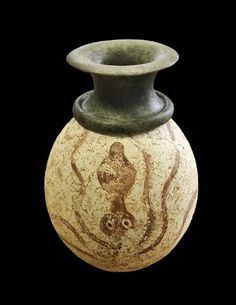 Tacia Verveer art., ref. below |
 | Due to its resistance, the shell can be not only painted but also engraved and carved: the natural colour of ostrich eggs is creamy, so scratches let appear the white layer underneath and creates a design. A typical product of South Africa is the engraved and carved ostrich eggs turned into lamps. | 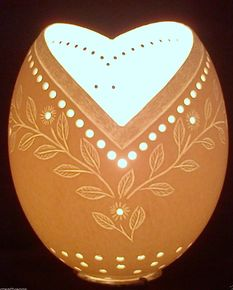 |
Ostrich was a very common animal in the Prehistoric Middle East and Africa. Neolithic petroglyphs of the Jordanian Badia show ostriches hunting scenes.
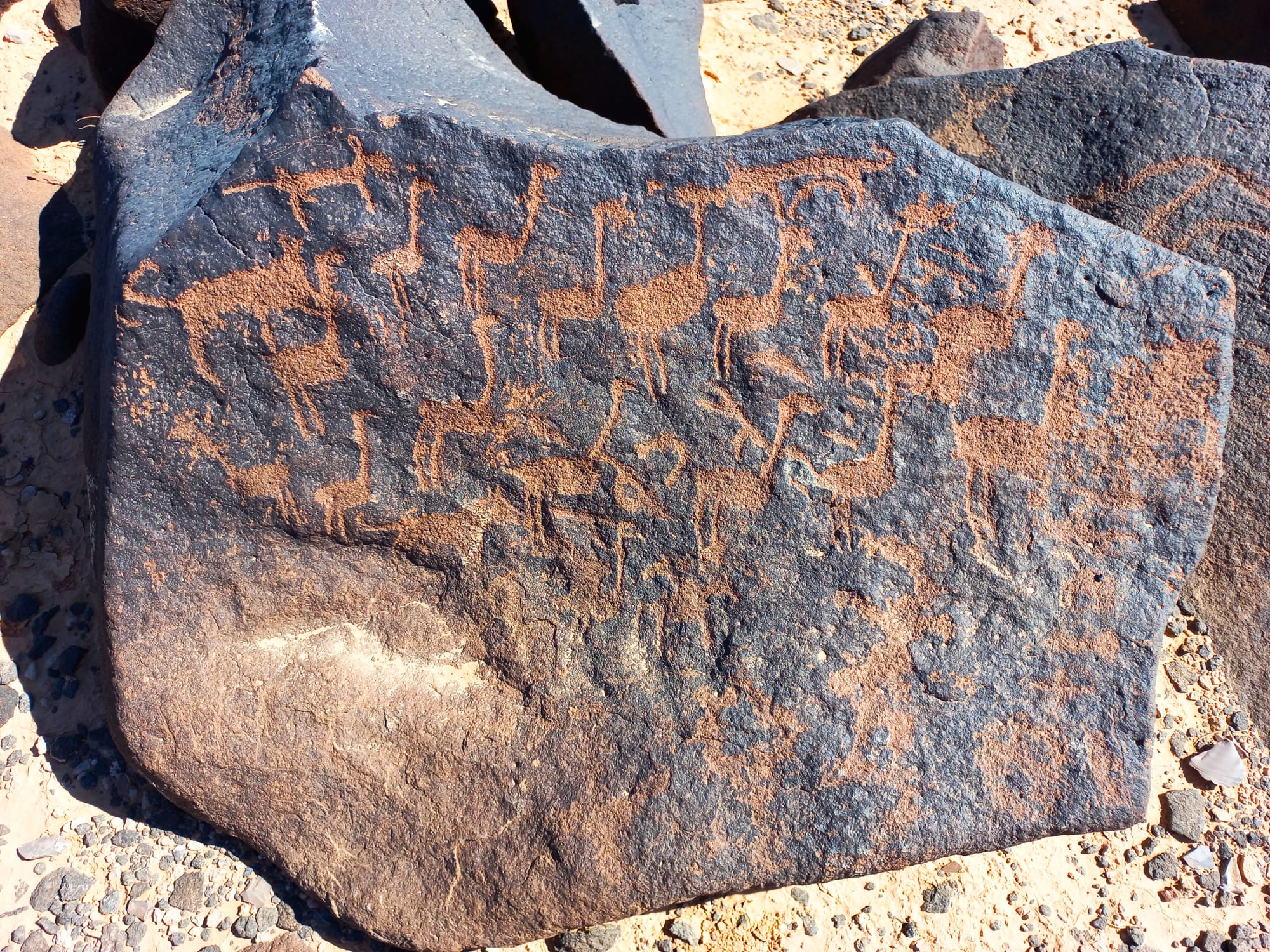
During the Bronze Age, tamed and semi-domesticated ostriches were kept in the gardens of Babylon and Nineveh, as well as in the palaces of Egypt. The decorated ostrich egg was a luxury object of the Mesopotamian and Egyptian cultures. Ostrich eggs were used for religious purposes and were a symbol of fertility and prosperity. In Egypt and in the Near East, it was often part of the funeral material, with probably a symbolism of food supply in the afterlife as well as of rebirth. We know that at the Iron Age and later decorated ostrich eggs were trade from the Middle East to the Western Mediterranean. Ostrich eggs engraved by a Phoenician artist were also discovered in a the famous Etruscan tomb in Italy, called Isis tomb, dating to 625 - 550 BC. (right image) | 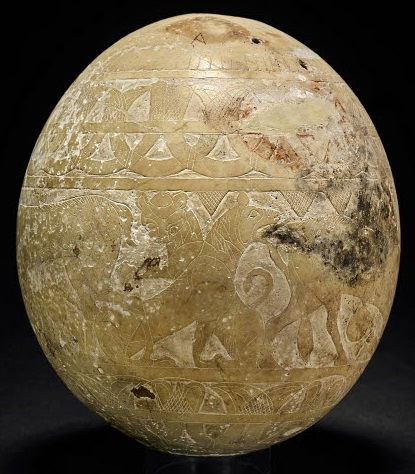 ph. The Trustees of the British Museum, www.bmimages.com |
 https://www.allisonhawryliw.com | Till now, ostrich eggs suspended from the ceiling or from a beam are still commonly found in old churches and mosques in Egypt, Near and Middle East. Their presence in those sacred contexts is due to their symbolism of creation and rebirth inherited from the ancient Middle East cultures pre-dating Christianity. | 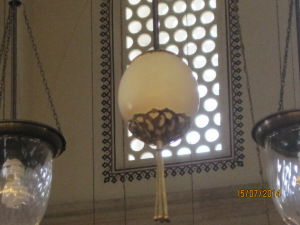 https://teetcherlaydee.wordpress.com |
At the Byzantine period, Middle East still hosted a rich variety of savanna fauna, among which the ostriches, as attested on the mosaics. However, as well as gazelles, ostriches were over-hunted and, finally extincted in the Middle-East and Arabian Peninsula. The use of the eggs as well as the decorations practices disappeared. However, ostrich eggs painting undergoes a revival today in connection with tourism, as a program was launched in Azraq when the Shaumari Wildlife Reserve was breeding ostriches, remembering in this way that the ancient Azraq oasis was hosting ostriches since the Prehistory. Nowadays, this activity is alive in Azraq and even flourishing in some homes. The production provides some souvenirs boutiques in through the country as well as the Gulf market.
The design largely reproduces the patterns from the Byzantine mosaics of the so called Madaba School, that we can admire on the sites of Madaba, Mt Nebo, Khirbet Mukhayyat and Umm Al Rassas. One of the most recurrent patterns is the tree of life, very famous in the mosaic art of the Near and Middle East. In addition, folkloric patterns as camels and typical Bedouin figures are sometimes added for catching the tourist eyes.
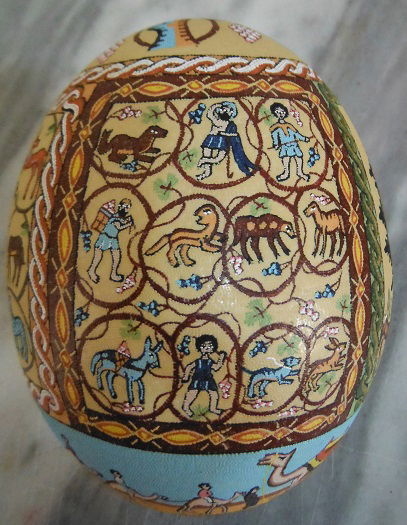 | 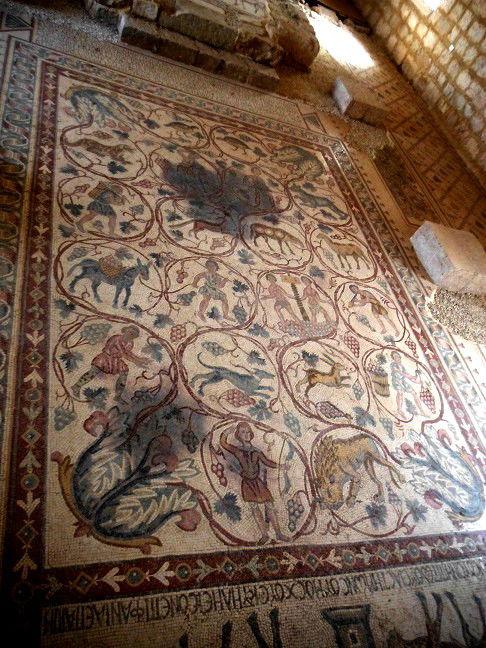 | 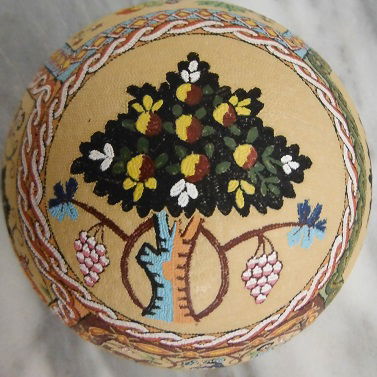 | 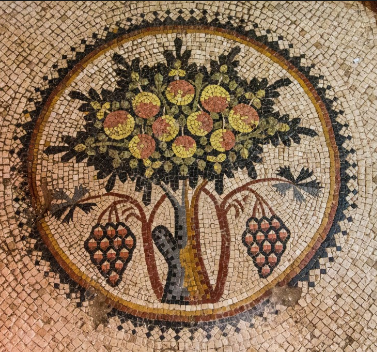 |
While it exists different techniques for colouring the eggs, the method used in Jordan is essentially the dotting, which reproduces the aspect of the mosaics. Painting is introduced in a pointy piping pocket out off which the artist lets flow tiny drops. Such a technique requests long training hours on a flat surface for gaining enough ability for applying it on the round shape of an egg.
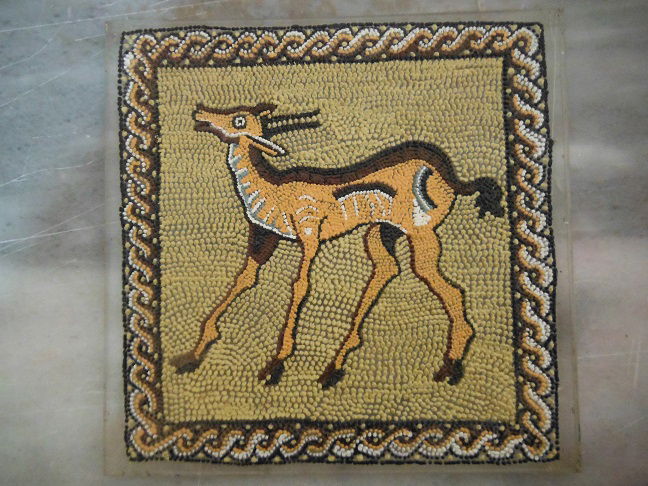
For a visit and experience in a workshop, see this page...
References:
https://ticiaverveer.wordpress.com/2016/03/21/the-worlds-oldest-decorated-eggs/
K.Kris Hirst: https://www.thoughtco.com/ostrich-egg-shells-169883
K.Kris Hirst: https://www.thoughtco.com/who-really-domesticated-ostriches-169368
Stephanie Hall: https://blogs.loc.gov/folklife/2017/04/decorating-eggs/
https://www.sciencedaily.com/releases/2017/04/170412091226.htm
https://www.bmimages.com/results.asp?searchtxtkeys=isis%20tomb